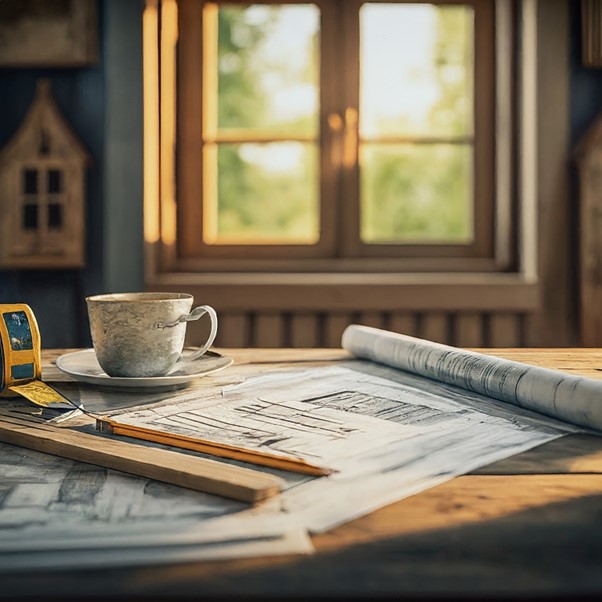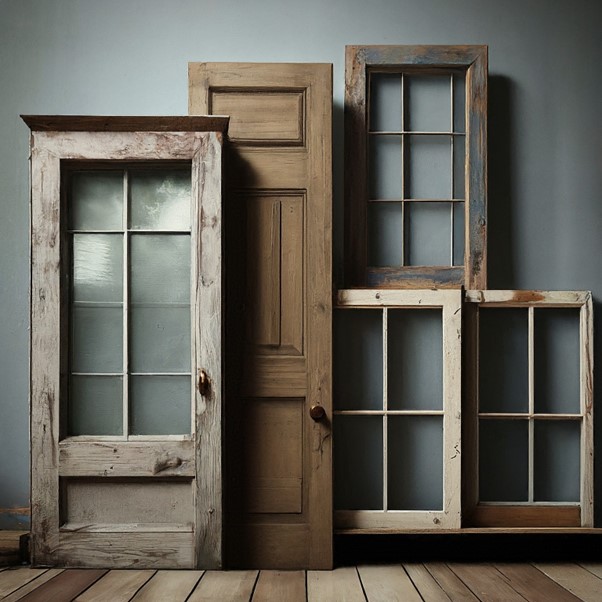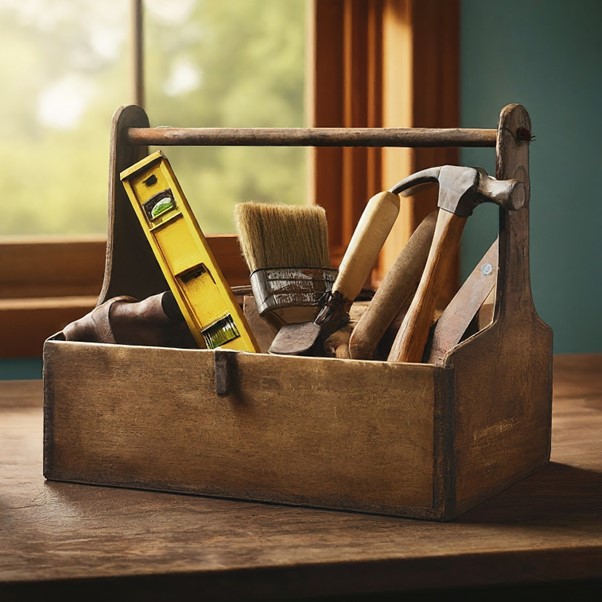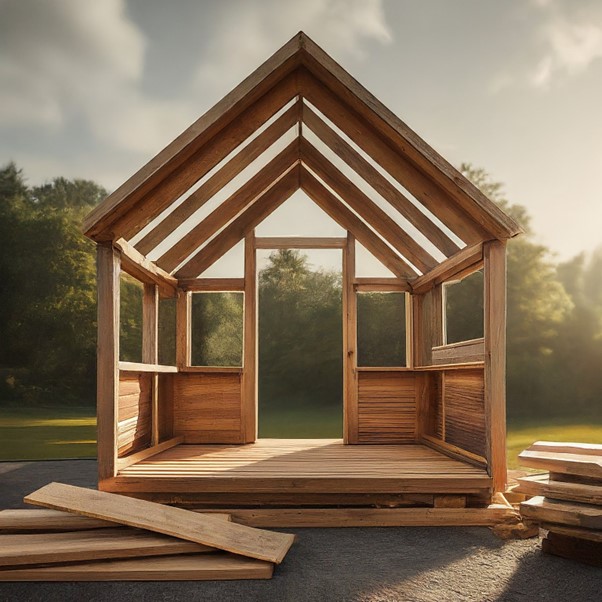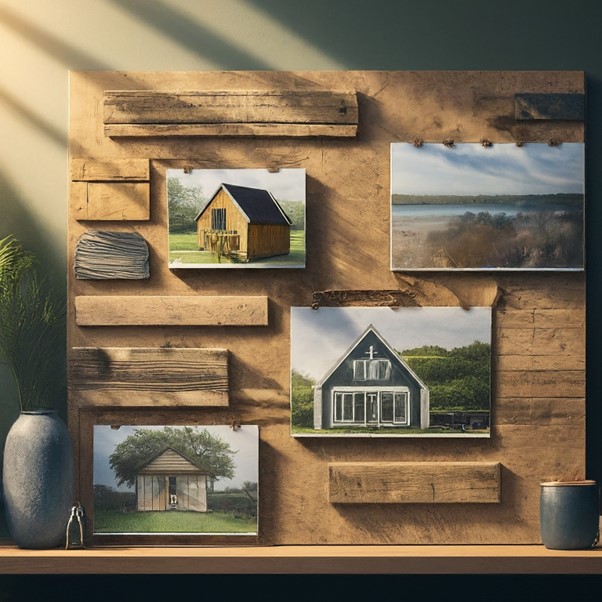For those of you who don’t know, upcycling is the process of repurposing discarded materials to create something of higher value or quality.
In recent years, it has become quite popular, as it offers DIY enthusiasts the chance to reduce their overall waste, while also allowing them to rejuvenate an old item into something that feels new.
For the most part, upcycling projects are small and don’t consume much time – think an old cupboard being given a lick of paint, or a chair being reupholstered. However, upcycling isn’t reserved for these small projects – the term also applies to bigger projects, such as the rejuvenation of upcycled summer houses.
Image via Gemini
Planning and Preparation
Setting Vision and Goals
Before diving into your project, defining your vision and goals is crucial. Consider factors such as the size of the structure, its location on your property, and the overall style you wish to achieve.
It would help if you also looked at your existing structure and whether it is of sufficient quality to be upcycled and saved from the scrap heap. Purchasing a new summer house isn’t as expensive as it once was, with a wide variety of options available for less than £1,000. Thus, if the upcycling project is more expensive than simply purchasing a new structure, you should consider your options.
Having a clear vision will guide your decisions throughout the project.
Design Considerations
Take time to brainstorm design ideas that harmonise with your surroundings and reflect your taste.
Consider the layout of your summer house, ensuring it maximises natural light and complements the landscape. For instance, if your garden is designed in a circle, with virtually no available corners, then upcycling your project into a corner summer house may not be the best option for you.
Sourcing Materials
Finding quality upcycled materials is essential for a successful project. Explore local salvage yards, online marketplaces, and community resources for materials like wood, doors, windows, and metal.
Being resourceful could save you a ton of money, but be vigilant for rotting, as you don’t want to create an upcycled summer home that falls asunder during the first period of bad weather… we do live in the UK after all.
Safety First
Before starting any construction project, familiarize yourself with local building codes and regulations. Always prioritise safety during the construction process and if you are unsure of what you are doing, consider employing experts who understand what they are doing and have experience creating such structures.
Image via Gemini
Core Materials and Sourcing
Wood, Doors, and Windows
Salvaged wood can add character, while old doors and windows can become unique architectural features.
However, it can be difficult to repair doors that have morphed out of shape and design and old windows can be drafty and not protect you from the elements. When upcycling an older summer home, it’s worth spending a little extra time considering these elements as they are literally the things that will protect your structure from the outside world.
Metal and Other Materials
Don’t overlook the potential of unconventional materials like metal in your upcycling endeavors. In the past metal structures tended to just look like abandoned bomb shelters. That is no longer the case, as metal structures can now be both versatile and long-lasting.
Thus, if you’re at a juncture in your upcycling journey, you should consider how metal, along with other materials, can be adapted and transformed to suit your project’s needs.
Assessing Condition and Value
As previously stated, when sourcing upcycled materials, carefully evaluate their condition and value. Look for signs of wear and damage and consider how these factors may impact their suitability for your project.
Balancing quality and affordability is key when selecting materials for your summer house. It should also be noted that some materials can be treated to improve their overall quality and appearance.
Image via Gemini
Essential Tools and Techniques
5 Must-Haves for Summer House Upcycling
Equip yourself with essential tools that are versatile and suitable for various upcycling tasks – this will ensure you have the necessary equipment to tackle your summer house project effectively.
Here are 5 must-haves for upcycling a summer house.
Wood Treatment
If upcycling a summer house, you should ensure that the wood you are using has been treated to last. A simple wood treatment product will add years to the lifespan of your timber and is a cost-effective way of keeping your project in tip-top shape.
A Basic Set of Hand Tools
If you are taking on a simple upcycling project, then the best thing you can do is to ensure that you have a basic set of tools that will help you with whatever the project throws up. Your tools should include a saw, paintbrush, a pocket level, a claw hammer, etc.
This BillyOh set is on offer for under £24 and it offers everything you may need to get started.
Felt Roofing
When upcycling summerhouses, many folks forget to weatherproof the roof of their structure. One cost-effective way to do this is by adding shed felt to the mix. It’s a way to stop water from entering your structure and is cheaper (although maybe not as long-lasting) as some of the other options.
Foundations
If you want your summerhouse to survive year after year, it should be built upon a solid base. Of course, if it is already there, you may not be able to move it. However, if you have acquired a summerhouse to upcycle, then this should be a consideration.
You can purchase fast-fit bases or even solid foundation bases and if you don’t want to put an installed base in place, perhaps consider a simple groove floor.
Greenery
One of the best things about having a summer house is getting in touch with the nature around you and having your special quiet place. As an outside decoration option, a planter can bring your entire structure to life, bringing a new sense of vigour to the exterior of an old summer house.
Key Upcycling Techniques
Familiarise yourself with common repurposing techniques such as cutting, sanding, painting, and joining materials. These techniques will enable you to transform salvaged items into functional and aesthetically pleasing elements of your summer house.
Of course, you should always do so while wearing appropriate safety gear and following best practices when using tools and equipment. Take precautions to prevent injuries and create a safe working environment for yourself and others involved in the project. If you have any specific questions, talk to an experienced DIY expert who has used the specified tools before.
Image via Gemini
Your First DIY Upcycled Summer House
The Project
When taking on your first upcycling project, try not to bite off more than you can chew. Embark on a beginner-friendly DIY project to create your upcycled summer house.
If you are an experienced DIY enthusiast who has brought structures back to their former glory in the past, you will understand the importance of correct planning and having the right help onboard at the right time. However, you should try where possible to include those close to you, because it is a special experience sitting in your complete summer house with friends and family who helped you get it into its final state.
Variations for Customisation
Whether it’s incorporating unique materials, adjusting the design, or adding special features, tailor the project to suit your preferences and resources. One of the joys of upcycling is that you can create something that feels truly unique and that shows off your personality.
Finishing Touches
A key tip for summer houses is to go that extra mile when it comes to decoration. You can add professional-looking finishing touches to your summer house to enhance its appearance and functionality.
From paint and stain to hardware and landscaping, pay attention to detail to achieve a polished result. It’s an element of creation that you will never forget.
Talk To Those That Have Done it Before
With any DIY project, it is important to learn from mistakes and those mistakes don’t necessarily have to be your own.
Talk to other folks (either online or in-person) who have taken on similar projects. Ask them where they faltered and where they found success. You will be surprised at how useful those conversations will be. They will allow you to learn from other’s experiences, to discover innovative solutions, and apply valuable lessons to your summer house endeavours.
Care and Maintenance
Looking after your summer house is almost as important as the upcycling process itself. After putting in that level of work, you will want to make sure that you now have a structure that will stand the test of time and won’t require further upcycling.
Weatherproofing
Protect your upcycled summer house from the elements by implementing weatherproofing techniques. Seal gaps, apply protective coatings, and choose durable materials to ensure the longevity of your structure.
You should also consider your initial placement of the structure, to ensure it isn’t in an area that is prone to flooding, dampness, or other issues.
Ongoing Preservation
Maintain the beauty and functionality of your upcycled materials with regular care and maintenance. Clean surfaces, inspect for damage and make repairs as needed to preserve their character and integrity over time.
It’s often easier (and always cheaper) to have a proactive approach, rather than a reactive one when it comes to maintenance.
Image via Gemini
Conclusion: The Joys of Upcycling
Key Recap
When it comes to upcycling, the benefits are plentiful. Of course, it is hard work, but it’s work that is rarely regretted. That is because, if done right, it can leave you with an end product that you can be proud of and enjoy for years to come.
It allows you to breathe new life back into something that others would consider to be done with. Thus, you will feel resourceful, help the environment by not creating further waste, and you may even give your bank balance a boost by avoiding an unneeded expenditure.
Instead of viewing limitations as obstacles, upcyclers see them as opportunities for innovation and ingenuity.
Resources Appendix
Sourcing Skills, Materials, and Tools
Online marketplaces are useful places to source materials on a budget. It is also worth checking your local salvage yard, as well as charity shops for things that may help give your upcycling project an added boost.
The list of workshops and tutorials for improving your DIY skills is endless. However, if you need a little bit of information, it’s also worth touching base with people who work professionally in the area, such as GardenBuildingsDirect.Co.UK.
We will be happy to help you where we can and give you guidance on the current summer houses and garden buildings on the market.
We hope our ultimate guide to upcycled summer houses equipped you with the principles of upcycling so you can unleash your creativity and enjoy the process of transforming discarded materials into beautiful and functional spaces.


